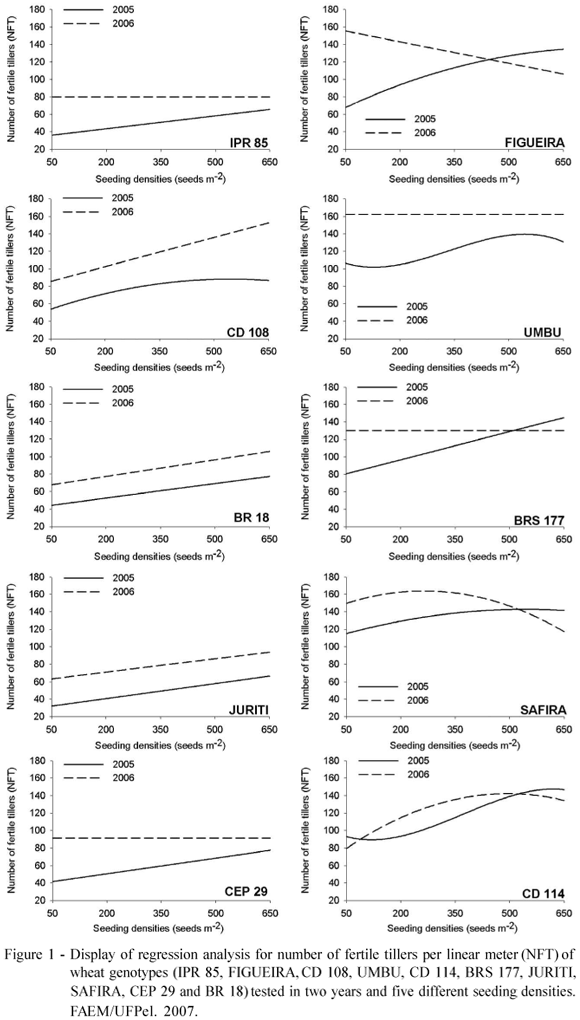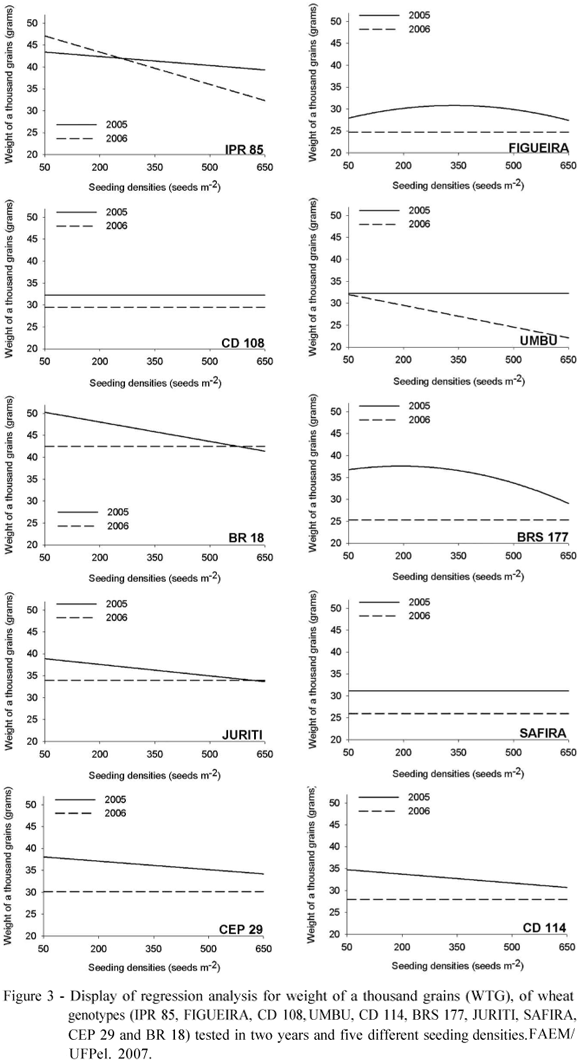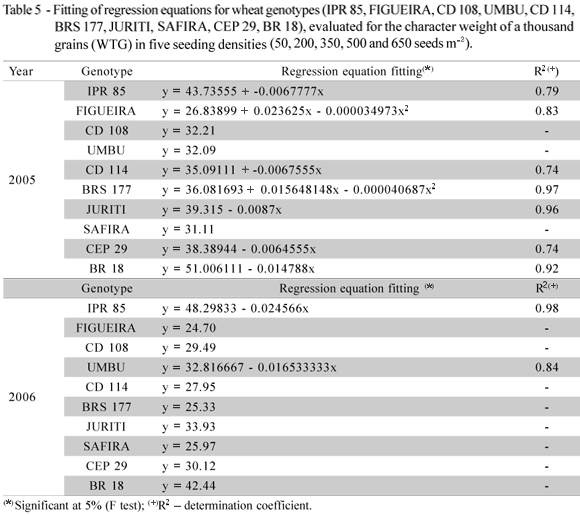Seeding density adjustments is one of the practices that most influence grain yield, as well as other agronomic traits. Therefore, the objective of this study was to determine the ideal plant stand to achieve the maximum grain yield in genotypes showing differential tillering ability. Also, to establish the associations between the genotypes used with tillering and other agronomically important traits as weight of a thousand grains. Two experiments were conducted in 2005 and 2006 in Capão do Leão, Rio Grande do Sul state, Brazil. Five low (JURITI, BR 18, CEP 29, BR 18 and CD 108) and five high (CD 114, SAFIRA, FIGUEIRA, BRS 177 and UMBU) tillering potential wheat cultivars were tested for two years on a split-plot design. The results indicate the need for recommending cultivars based on more than one year of cultivation, especially when dealing with contrasting genotypes for the trait fertile tillers. Regarding the ideal plant stand, seeding density of low tillering ability genotypes ranges from 417 to 555 seeds m-2, in order to obtain maximum yield and grain weight. On the other hand, for high tillering ability genotypes, the ideal stand ranges from 221 to 422 seeds m-². These results were year independent. Furthermore, low tillering ability genotypes showed a closer association of number of fertile tillers with grain yield. However, an inverse association was found between number of fertile tillers and weight of a thousand grains.
Triticum aestivum L.; grain yield; number of fertile tillers; plant stand








